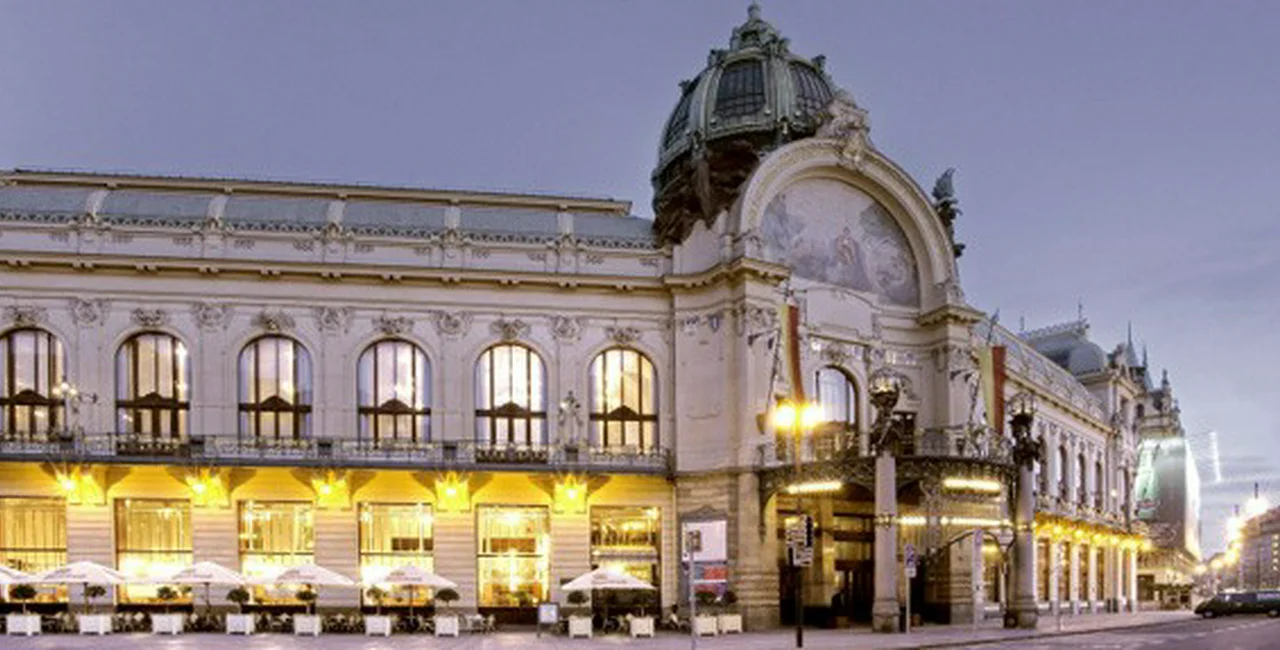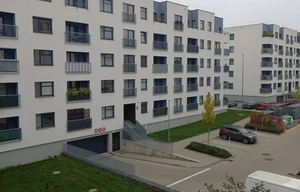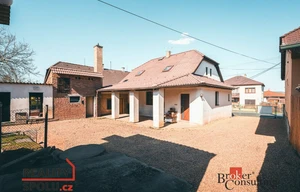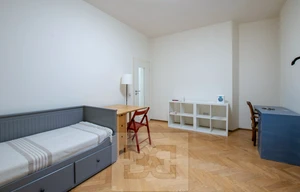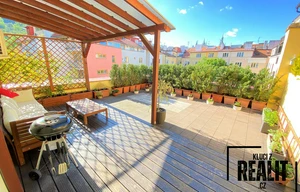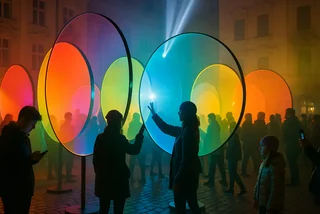Its prominent position, striking art Nouveau architecture, and bombastic green dome easily make it one of Prague’s most famous landmarks, but it’s surprisingly easy to ignore the Municipal House (Obecní dům) in Prague.
While you may walk past it countless times on a regular basis, it’s not unusual to find yourself sidestepping the attraction as you weave in and out of the tourist hordes and leaflet touts permanently milling about in front of the main entrance. But few other venues in Prague include a glorious concert hall frequented by world-class musicians, a space that regularly hosts major exhibitions, and a fin-de-siècle restaurant. The imposing Art Nouveau building overlooking Náměstí Republiky plays a key role in Prague’s cultural life and is rich in historical significance, so it deserves a closer look. And this year is a special time to do so, because the Municipal House is celebrating its 100th anniversary.
History
One of the first things you notice about the Municipal House is the contrast with its brooding Gothic neighbour, the blackened Powder Tower (Prašná brána), although the two are linked by a bridge. The sunny yellow façade of the Municipal House is the opposite of the gloomy stonework of the Powder Tower, and the sinuous Art Nouveau curves contrast with spiky medieval angularity.
The clash of styles and the position of the Municipal House, at the gateway to the Old Town, hint strongly at the story of this site, which stretches back to the Middle Ages. It was occupied by the Royal Court, built in 1380 by King Václav IV, father of Charles IV, and home to the kings of Bohemia, including George of Poděbrady (Jiří z Poděbrad), for just over a century.
The fortunes of the Royal Court started to wane in 1484, when King Vladislav Jagiello decided to move the court back to Prague Castle, and when the Habsburgs acceded to the throne in 1526 they showed no interest in the Royal Court. In 1631, the complex was bought by Cardinal Arnošt Harrach, who established a seminary on the site, but the Royal Court’s decline accelerated rapidly in 1689, when it was destroyed by fire; only the gate remained and was later used to store gunpowder, thus acquiring the name that is still used today. The old Royal Court site remained in use, however, and later became a barracks, and the church of St Adalbert also stood there.
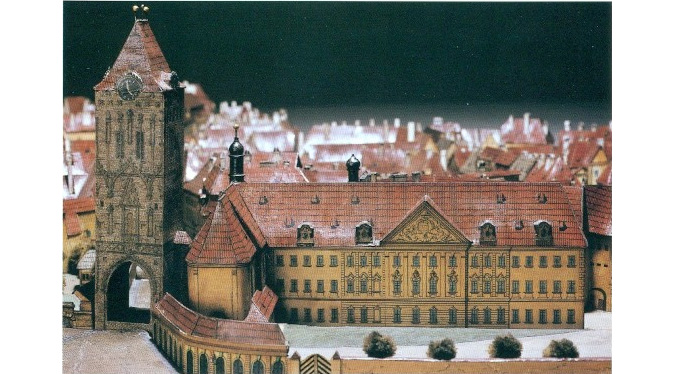
As the Royal Court story drew to a close, the story of the Municipal House, which was to stand in its place, was just starting. It was the threshold of the 20th century, a crucial time for the Czech lands: the Habsburg Empire was dying, while Czech demands for self-determination were increasing, and intertwining with a flourishing Czech culture. Although part of the Habsburg Empire, whose official language was German, Prague was asserting itself as the centre of Czech culture. Yet the German social and cultural centre, the German House (today’s Slovanský dům), stood on Na Příkopě, one of Prague‘s main thoroughfares. This irked many Czechs, whose counterpart was located in much less prominent postion. Tensions rose between Czechs and Germans, and the same time calls for a Czech social and cultural centre in what was then still a provincial capital of Austria-Hungary, grew louder. Such demands were addressed to the municipality, which responded by granting the land once occupied by the Royal Court. The barracks and the church of St Adalbert, which now stood there, were razed to the ground and the site would be redeveloped.
Art, architecture and politics
In 1903, a competition was staged to design an imposing structure as a symbol of Czech national identity – but as cheaply as possible. The contest stumbled and was ultimately unsuccessful; leading architects Osvald Polívka and Antonín Balšánek were parachuted in to work on the project instead of winners emerging from the competition. The pair were given architectural responsibilities as well as coordinating the artwork, and construction work started in 1905. Their solution was an imposing structure with a symmetrical main façade, topped by a copper dome in the central bay. The two wings on each side are angled away from the central bay, following the irregular shape of the site.
They chose Art Nouveau, the style of the moment in Europe in the early 20th century. Czech artists embraced it enthusiastically, using it as a means to express Czech nationalism, through the paintings, sculpture and stained glass in the Municipal House. Many leading figures from the art world, such as Alfons Mucha and Josef Vaclav Myslbek, were involved in creating the artwork at the Municipal House. Notable examples include the mosaic over the main entrance, known as Homage to Prague, by Karel Špillar, and the allegorical sculpture groups on each side of the mosaic called Degradation of the People and The Resurrection of the People by Ladislav Saloun, who designed the Jan Hus statue on Old Town Square. The lavish interiors feature murals with nationalist themes by Mucha and many others.

The Municipal House opened in 1912, and six years later it again acquired a political significance, when Czechoslovak independence was declared there on October 28 in the Smetana Hall. During the communist era, the Municipal House fell out of favour for inevitable ideological reasons, and the communists preferred their ugly, ungainly Palace of Culture at Vyšehrad. But rather fittingly, given the political symbolism of the Municipal House in the early 20th century, it became a venue for political debate towards the close of the same century. During the 1989 Velvet Revolution, Civic Forum, led by Václav Havel, and a delegation under Czechoslovakia‘s last communist prime minister, Ladislav Adamec, held three of their nine negotiation sessions there.
Municipal House today – 100th anniversary
The Municipal House underwent extensive restoration in the 1990s, after decades of neglect, and today is one of Prague’s leading cultural venues, fulfilling the functions it was designed for. The largest space is the Smetana Hall, a bright, vast concert hall seating 1,200 people and most famously associated with the renowned Prague Spring Music festival, held annually in May and June. The concert always kicks off on May 12 in the Smetana Hall, with a performance of Czech composer Bedřich Smetana’s My Country (Má Vlast), in the presence of the Czech president. The venue hosts a range of concerts throughout the year, and famous names such as Rolando Villazon and Dagmar Pecková have appeared there.
As well as a music venue, the Municipal House is also a notable exhibition space, and has hosted a number of major exhibitions over the years. This year, to celebrate its centenary it is staging “1912”, featuring the works of artists who exhibited their work at there in 1912. The exhibition features the works of younger and older artists of that time. The younger tendency includes representatives of the Czech Cubist movement, including Josef Gočár.
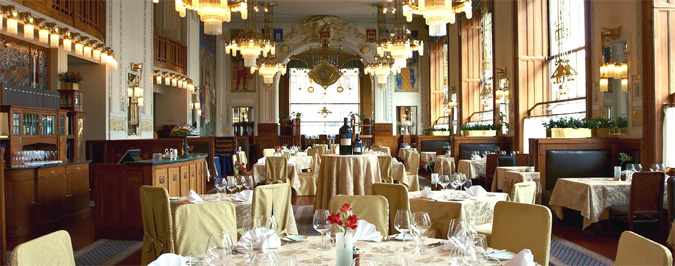
And of course, you can stop by for a meal or something to drink at the Francouzská Restaurace, Plzeňská Restaurance, or American Bar. Not surprisingly, none of them are the cheapest in Prague, and prices shot up after the Municipal House was restored. Many locals and expats regard the Francouzská Restaurace as tourist-oriented, preferring to patronize establishments with a similar atmosphere, such as Café Savoy or Café Louvre. However, the restaurant has one of the best Art Nouveau interiors in Prague, and it’s worth spending some time there for that reason alone. So despite the location, amidst tourist mayhem in one of Central Prague‘s busiest corners, the Municipal House shouldn‘t be overlooked. To ignore it is to miss out on a slice of Prague life.
For more information on the exhibition and the Municipal House see this link.
Related articles












 Reading time: 6 minutes
Reading time: 6 minutes 